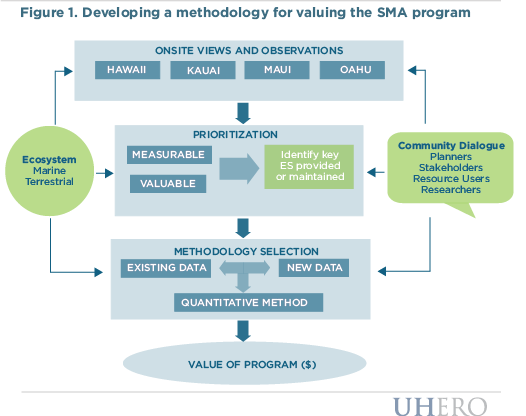By Christopher Wada
Hawaii has 750 linear miles of coastline that include all of our beaches, an array of cliffs, bays and other features that count among our most treasured natural resources. Development of these resources is a key source of economic growth, but ensuring that this development is carried out in a manner that preserves, protects and (where possible) restores them is important for their long term value.
Since 1975 a permitting system administered by each county has been the primary vehicle for managing development of the coastal zone. To support decision making in the permitting process, The UHERO Project Environment team collaborated with the State Office of planning to review the way benefits provided by the program are evaluated.
Project Environment was asked to identify a set of key ecosystem services to study, selecting the services on the basis of their measurability and expected value. The final list included public access, beach and shoreline protection, marine resources, and scenic and open space. Other important but difficult to measure benefits, discussed but not incorporated in the methodological assessment, include those related to cultural values and practices.
The UHERO team visited various project sites in each of the four counties across the state and concluded that benefits of the permitting process are very site-specific, rendering a statewide assessment via benefit transfer – a valuation method that adjusts estimated values from studies completed in other locations – impractical. Instead, original valuation methods were recommended for each site, depending on the type of ecosystem service protected or enhanced, site characteristics, and the type and number of users, among other things. For example, an encroachment removal and dune restoration project at Charley Young Beach (Kihei, Maui) was estimated to have doubled the usable beach width, while expanding view corridors, reducing erosion, and replenishing sand dunes. Estimating the value of each of those benefits requires different data and methods.

The final report discusses potential valuation methods for seven case studies throughout Hawaii, and includes a primer on valuation methods, with pros and cons, as well as data requirements for each. For more on economic valuation of environmental services in Hawaii, visit UHERO’s Project Environment.